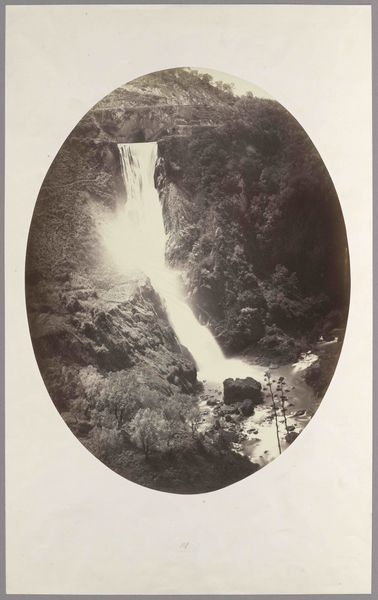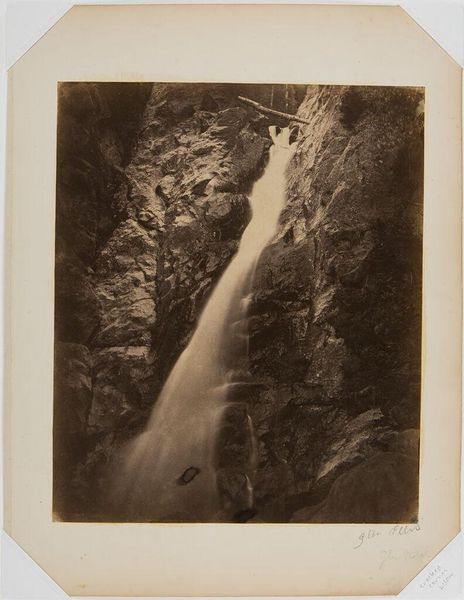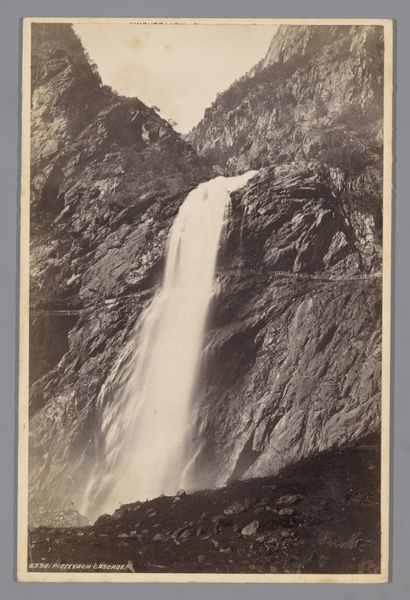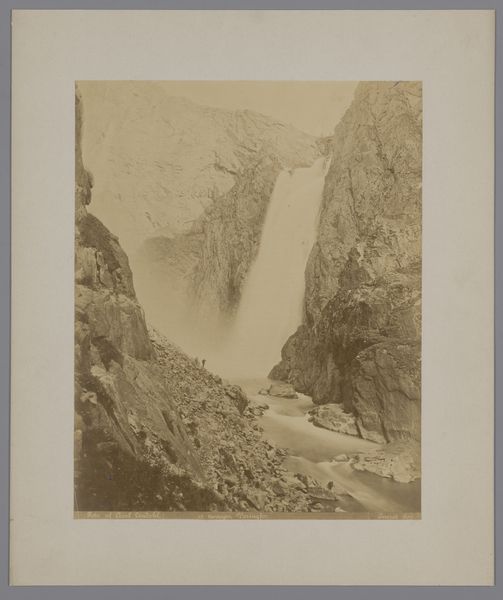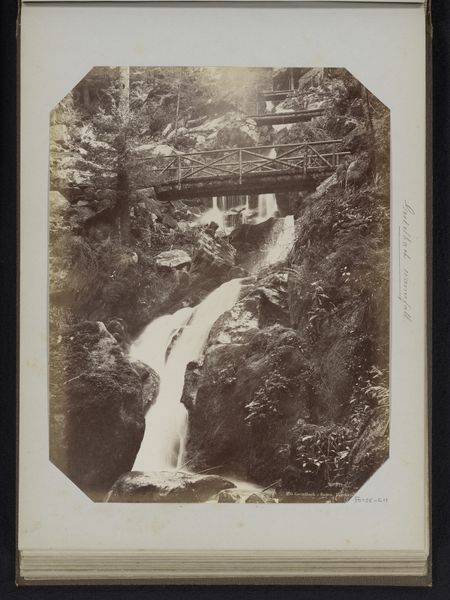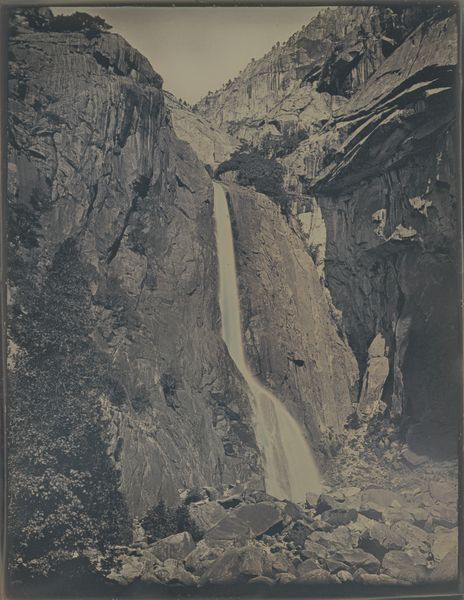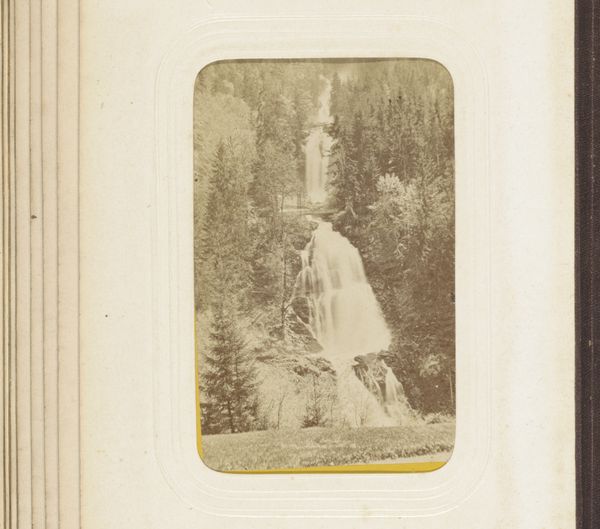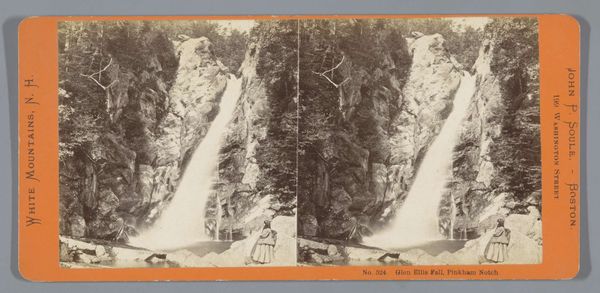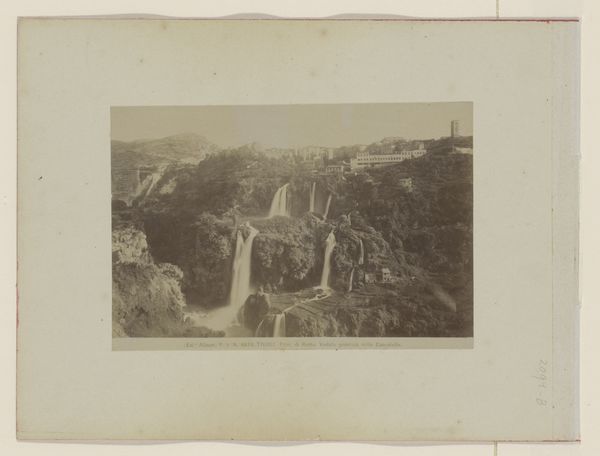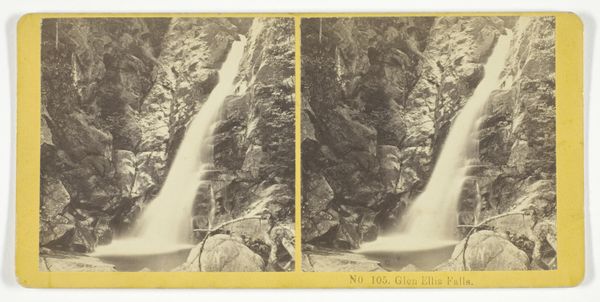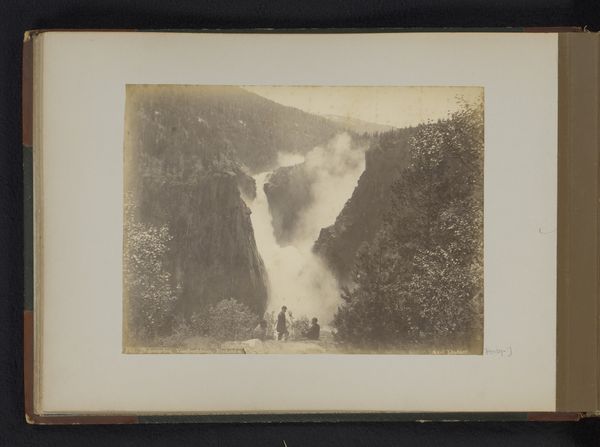
Dimensions: height 104 mm, width 60 mm
Copyright: Rijks Museum: Open Domain
Editor: This gelatin-silver print, taken sometime between 1864 and 1868 by André Schmid, is titled "Gezicht op de waterval van Pissevache," or "View of the Pissevache Waterfall". It's overwhelmingly dramatic. I’m curious – what cultural meanings can be teased out of such a photograph? Curator: Note how the rockface looms over the waterfall, dominating the image. Waterfalls were often used in Romantic era painting and photography to symbolize nature's power, sublimity, and even danger. Consider the tiny figures at the bottom – do you see how small they appear compared to the scale of the falls? Editor: Absolutely, it emphasizes nature's grandeur! It almost feels religious, like the waterfall is a deity and the figures are worshippers. Curator: Exactly. And think about what water represents: purification, the constant flow of time, and even the unconscious mind. Schmid may be playing with the idea of the human spirit confronting the immensity of existence. Notice how the buildings and people seem neatly organized along lines compared with the chaotic rockface. Editor: That's a compelling idea. So, beyond just a pretty landscape, it's tapping into deeper anxieties and wonder about our place in the universe? Curator: Indeed. The waterfall isn't merely water; it’s a symbol charged with layered meanings about the relationship between humanity and the awesome, indifferent forces of nature. Schmid’s capturing an emotion, not just an image. Editor: That makes me think differently about landscape photography in general! I thought it was merely about documenting the land as is. Curator: So many meanings are buried under the surface of representation if we care to look! Editor: Thank you, that's a very helpful way to see the image in a new light.
Comments
No comments
Be the first to comment and join the conversation on the ultimate creative platform.
